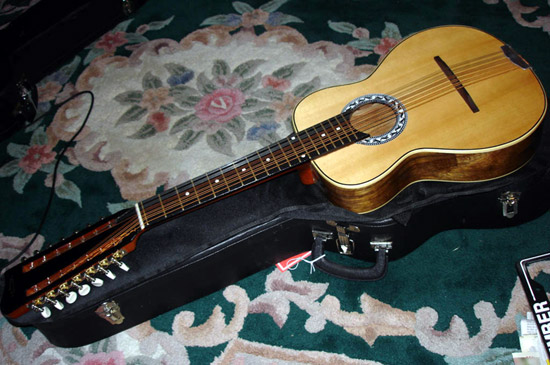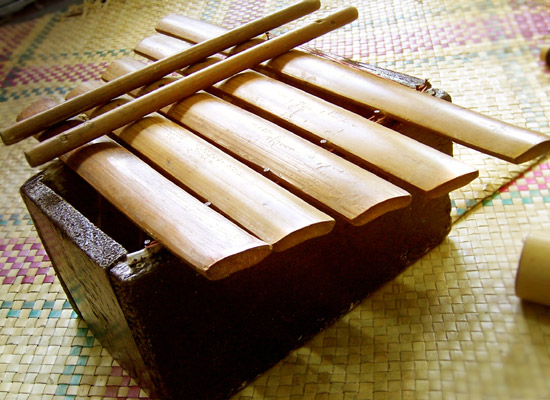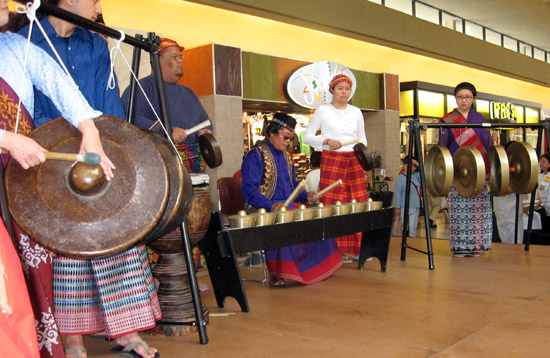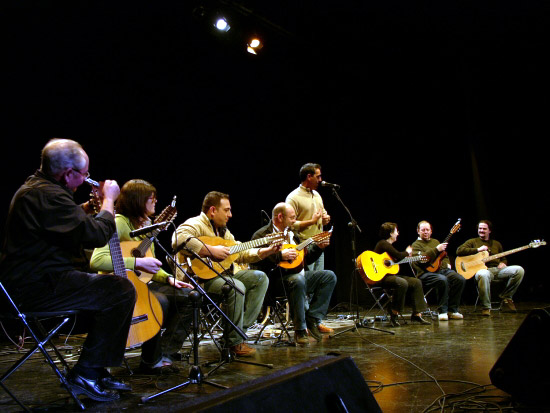Music: Instruments and Ensembles
Many instruments are played in the Philippines, some indigenous and some introduced. The following are some of the most common:
Chordophones
The aduwagay is a one-string spike fiddle with a coconut-shell body, played with a bow. However it is increasingly being replaced by the biula, as the European violin is known in the Philippines.
The kudyapi is a two-string lute with a boat-shaped body, played with a plectrum. One string acts as a drone, while the other string is fingered against moveable frets that are held in place by beeswax.
Another very similar instrument is the kudlong: strung and played like the kudyapi, it has a narrow, teardrop-shaped body.
The kolitong is one of several bamboo tube zithers found in the Philippines. As with similar instruments found in Indonesia and Madagascar, the kolitong strings are made from the fibers of the bamboo tube itself, held away from the tube by movable bridges.
Aerophones
The kalleleng is a nose flute, a bamboo transverse flute played by blowing through a nostril.
The tipano is a bamboo transverse flute that is mouth-blown.
There is also the pulalu, a two-hole flute played by overblowing, like a tabor pipe.
The sahunay is a reed pipe made from bamboo, with a single-bladed reed and a bell made from bamboo leaves or wood.
Idiophones
The gabbang is a small xylophone-like instrument with 17 bamboo keys suspended over a trough, played by the Tausug on Sulu.
Several tribes use large tubes of bamboo as percussion instruments. The tubes are built as slit drums, with an opening cut to improve resonance.
The kubing is a jaw harp made from bamboo, wood, or metal. The player plucks the movable tongue, holding the instrument against his mouth and altering the shape of his mouth to play simple melodies.
Ensembles
The Kulintang Ensemble
A kulintang orchestra usually consists of six instruments. The kulintang itself has five to nine tapered gongs with a convex boss in the center, mounted on a wooden frame with a trough resonator. The frame may be elaborately carved and painted, or it may be simple and unadorned. The gongs are struck on their bosses with sticks made of some lightweight but tough wood such as balsa. In addition to the kulintang itself, there are three gandingan, suspended gongs of medium size; the agung, a large suspended gong; and the dadabuan, a large, hour-glass-shaped drum with a skin head, something like a conga drum, played with the open hand.
Instruments of the Rondalla
The basic instruments of the string orchestra known as the rondalla are guitar, bandurria, laud, octavina, and double bass. The guitar and double bass are identical to their European counterparts, but the other instruments have evolved Filipino forms. The bandurria is the lead instrument; it is similar to a flat-backed mandolin but has 14 strings in six courses. The laud is shaped and tuned like the bandurria but is larger and tuned an octave lower. The octavina has 14 strings, also in six courses, and a body shaped like a guitar. It is tuned the same as the laud, an octave lower than the bandurria.
The Gangsa Gong Ensemble
The gangsa ensemble found in the Cordillera consists of flat gongs in several sizes, suspended from cords or held in the players’ hands. They are sounded with wooden sticks or mallets, or with bare hands. The size and number of gongs varies from group to group.
Article written for World Trade Press by Marc Lecard.
Copyright © 1993—2025 World Trade Press. All rights reserved.

 Philippines
Philippines 


